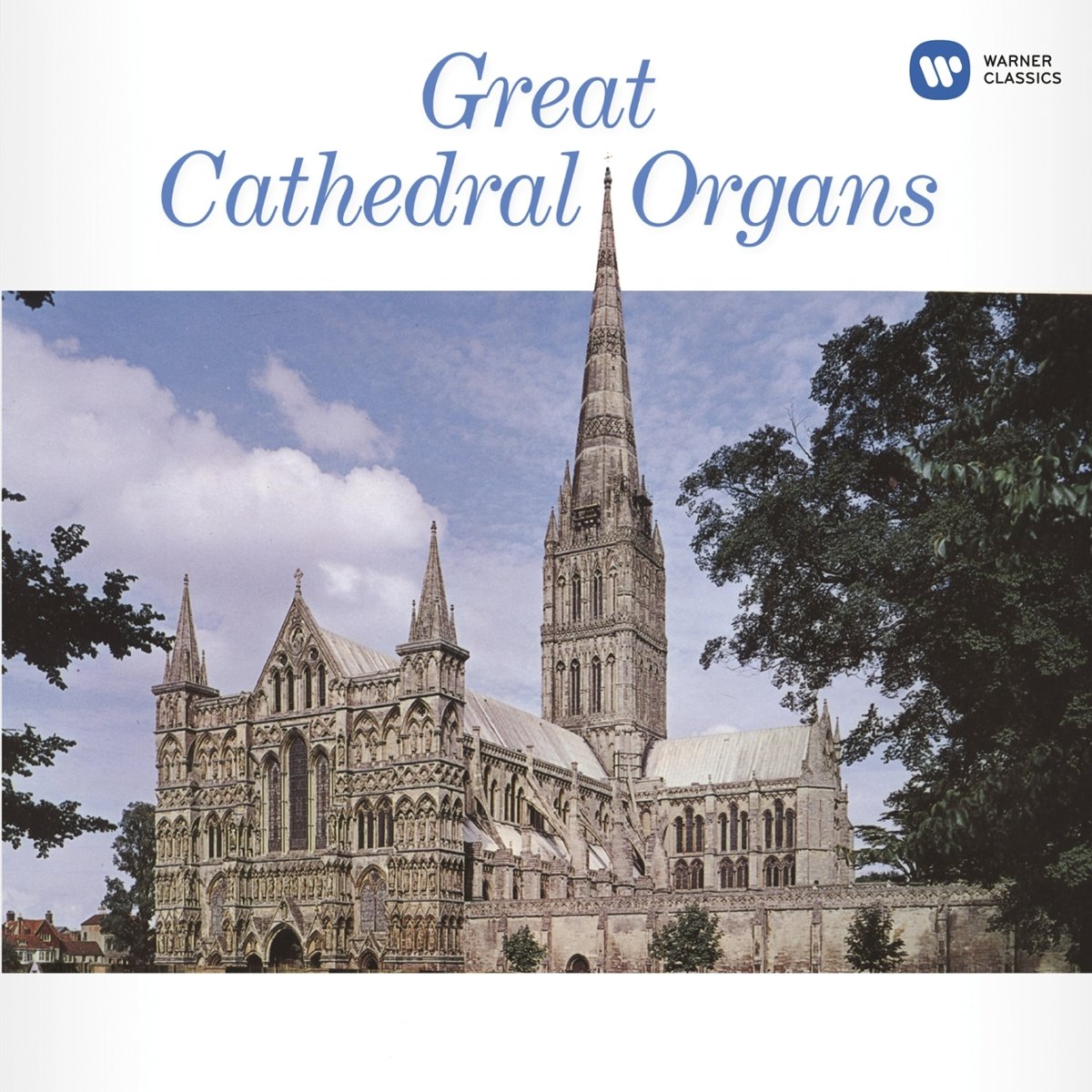 |
|
1 LP -
CSD 3595 - (p) 1967
|
|
SALISBURY
CATHEDRAL - Volume 11
|
|
|
|
|
|
|
|
| César FRANCK
(1822-1890) |
Choral
No. 1 in E
|
|
|
15' 41" |
A1 |
| Camille SAINT-SAËNS
(1835-1921) |
Fantaisie
in D flat, Op. 101
|
|
|
10' 42" |
A2 |
| Carl NIELSEN
(1865-1931) |
Commotio,
Op. 58 |
|
|
25' 49" |
B |
|
-
Adagio - Andantino quasi allegretto
- |
|
5' 48" |
|
|
|
-
[Fugue I] A tempo (Poco tranquillo)
- |
|
5' 09" |
|
|
|
-
Andante sostenuto -
|
|
3' 41" |
|
|
|
-
[Fugue II] |
|
2' 27" |
|
|
|
-
3/4 (dotted crotchet = crotchet) - A
tempo ma fluente - [Coda]
|
|
8' 44" |
|
|
|
|
|
|
Christopher
DEARNLEY, Organist
|
|
|
|
|
Recorded
at: |
|
Salisbury
Cathedral (Great Britain) - 18-20
October 1966
|
|
|
Live / Studio
|
|
Studio |
|
|
Producer |
|
Brian
B. Culverhouse
|
|
|
Balance
engineer
|
|
Stuart
Eltham
|
|
|
First LP
Edition
|
|
EMI
- His Master's Voice | CSD 3595
| 1 LP | durata 51' 12" | (p)
1967
|
|
|
CD Edition |
|
EMI
Classics | 0 85295 2 | 13 CDs
| LC 06646 | (c)
2011 | ADD
|
|
|
Note |
|
-
|
|
|
|
|
The original
19 LPs in CD

13 CDs - 0
85295 2 - (c) 2011
(in CD 7:
Tracks 3-9)
|
Nielsen
completed Commotio in
the last year of his life, and
described briefly its structure
as 'supported by two fugues, on
to which introduction, linking
movements and coda cling like
creepers to the trunks of a
forest.' The title Commotio
he admitted ysing as 'an
expression for
self-ibjectivization', but in
fact it hints at more than the
rigid control on the composer's
part of ěall personal and
lyrical feelings'. The work, in
one continuous and lengthy
movement, coheres more through
the unity of its basic pulse,
achieving variety by the
interplay of many subdivisions
of this pulse, than through the
use if conventional forms such
as fugue and the dramatic
tension of opposing tonal
centres. For instance, in the
opening common-time Adagio
(which immediately states both
duple and triple measures and
their subdivisions) the quaver
melts into the dotted-crotchet
of the 3/8 Andantino quasi
allegretto, which again
eases into the pulse of the poco
tranquillo fugue, where a
whole bar is equivalent to a
crotchet of the introduction.
This fugue, however, never
achieves a conclusion,
disintegrating as the themes
splinter into fragments, and
exploding in a violent clash of
tonalities as the pedal organ
battles against the full manual
choruses. Yet through this a
certain poise is reached as the
music settles into the 3/4 andante
sostenuto, with again its
pulse linked to the opening of
the piece (Andante
crotchet equivalent to Adagio
quaver). Without any further
change this leads naturally into
the final fugue (3/4 crotchet
equivalent to 12/8
dotted-crotchet or 3/4
crotchet). The earlier frictions
of duple and triple measures
resolve into a peaceful
co-existence, and are eventually
united in the final triumphant
12/8 section.
Thus, in Commotio,
rhythmic (as well as melodic and
tonal) elements are moulded into
an organic unity continuously
evolving through an extensive
period with a dramatic,
inevitable momentum.
©
Christopher Dearnley, 1967.
CHRISTOPHER HUGH DEARNKEY
born 11 Februaryr 1930 in
Wolverhampton. Son of the Rev.
Charles Dearnley. Organ Scholar
Worcester College, Oxford, 1948.
Assistant Organist Salisbury
Cathedral, 1954; Organist and
Master of the Choiristers, 1957
|
|